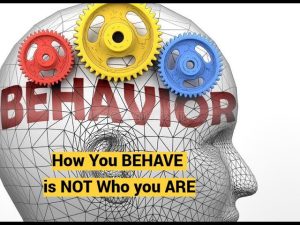How Narcissist Experiences/Reacts to No Contact, Grey Rock, Mirroring, Coping, Survival Techniques
1. Nature and Origins of Narcissism
- Narcissism as a post-traumatic condition originating from childhood abuse, typically by parents, resulting in a victim identity and a narcissistic false self created as a defense mechanism. The narcissist victimizes others to feel a sense of belonging among victims, his “comfort zone.” [00:00]
- The narcissist has no core identity due to ontological insecurity, suffering from dissociation and memory breaks, resulting in a fragmented self and use of confabulation to fill memory gaps. [08:00]
- Narcissists function with paradoxical thinking, holding contradictory beliefs simultaneously, which leads to unpredictable and shifting behavior patterns. [21:00]
2. Psychological Structure of the Narcissist
- The narcissist’s mind resembles a “hive of bees,” dependent entirely on reflected images from others to form their self-image; without reflection (attention), they feel nonexistent, underlining their need for constant supply and interaction. [28:00]
- The narcissist possesses “cold empathy”—an unemotional, cognitive recognition of others’ feelings used strategically to manipulate rather than emotionally connect. Displaying emotions provides the narcissist with leverage. [35:00]
- Narcissistic relationships are power dynamics rather than emotional bonds, characterized by cycles of idealization, devaluation, discard, and replacement. Effective counter-strategies include reversing this cycle through triangulation and other tactics. [40:00]
3. Dynamics of Narcissistic Relationships
- The narcissist maintains a static “snapshot” of their partner from initial idealization; as the partner grows and changes, divergence from the snapshot leads to devaluation and eventual discard to protect the false self. Victims often feel inner psychological death as a result. [45:00]
- Intimate partners of narcissists should avoid showing vulnerability, offering help, or advice because these are perceived as threats or humiliations, producing narcissistic injury. [37:00]
- Narcissistic supply is essentially worship aimed at the narcissist-as-god; thus, living with a narcissist parallels life in a religious cult with rigid rules on behavior and communication, where the narcissist is infallible and supreme. [48:00]
4. Therapeutic and Coping Insights
- Therapy with narcissists typically fails because narcissists are not adults mentally but function at a childlike level with magical thinking, grandiosity, and immunity illusions, perceiving themselves as omnipotent beings. Therapeutic approaches should be child-psychology based, highlighting the success of “cold therapy.” [55:00]
- The narcissist holds an external locus of control and uses alloplastic defense, blaming external factors for all failures; partners can strategically become this external locus of control to increase co-dependency and reduce abuse. [52:00]
5. Paranoia and Narcissism
- Paranoia is identified as a form of narcissism characterized by grandiosity (“I am the center of attention”) and persecutory delusions (“someone wants to harm me”). Secondary delusions lead to hypervigilance and exaggerated sensitivity to perceived slights. [59:00]
- Enhancing the narcissist’s paranoia and hypervigilance by feeding their sense of threat can increase their dependence on the partner and strengthen bonding in certain contexts, such as shared external enemies. [61:00]
6. Final Reflections and Key Takeaway
- Managing a narcissist is essentially managing a four-year-old child—recognizing the immaturity and childlike patterns in their behavior saves effort and emotional energy. The overall theme emphasizes power dynamics, fragmented identity, and the futility of expecting genuine emotional relationships with narcissists. [58:00 — 1:03:00]
This structured summary outlines the psychological understanding of narcissism as presented, coping strategies for dealing with narcissists, and the behavioral dynamics that define toxic relationships with them.






